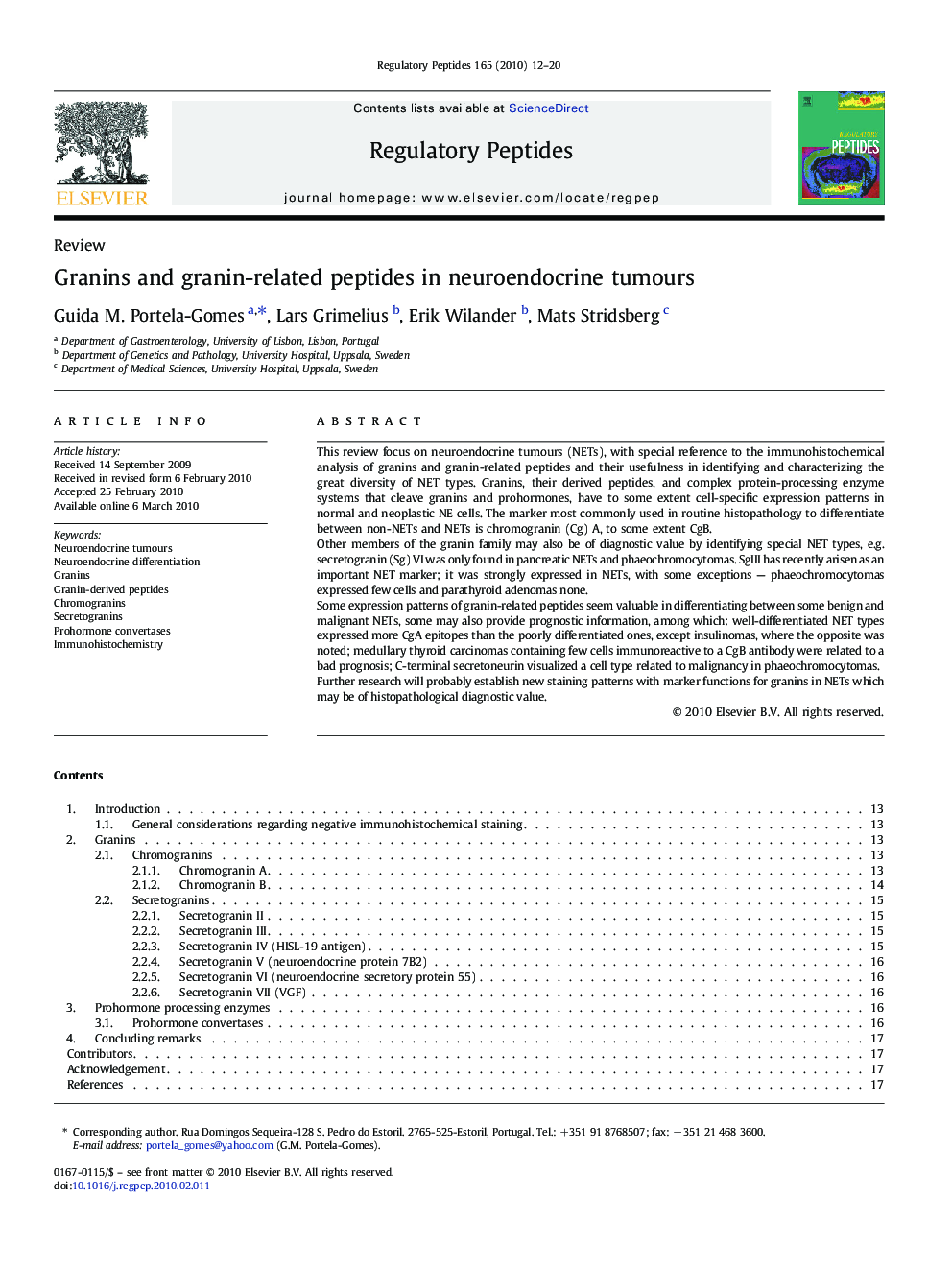| Article ID | Journal | Published Year | Pages | File Type |
|---|---|---|---|---|
| 2022633 | Regulatory Peptides | 2010 | 9 Pages |
This review focus on neuroendocrine tumours (NETs), with special reference to the immunohistochemical analysis of granins and granin-related peptides and their usefulness in identifying and characterizing the great diversity of NET types. Granins, their derived peptides, and complex protein-processing enzyme systems that cleave granins and prohormones, have to some extent cell-specific expression patterns in normal and neoplastic NE cells. The marker most commonly used in routine histopathology to differentiate between non-NETs and NETs is chromogranin (Cg) A, to some extent CgB.Other members of the granin family may also be of diagnostic value by identifying special NET types, e.g. secretogranin (Sg) VI was only found in pancreatic NETs and phaeochromocytomas. SgIII has recently arisen as an important NET marker; it was strongly expressed in NETs, with some exceptions — phaeochromocytomas expressed few cells and parathyroid adenomas none.Some expression patterns of granin-related peptides seem valuable in differentiating between some benign and malignant NETs, some may also provide prognostic information, among which: well-differentiated NET types expressed more CgA epitopes than the poorly differentiated ones, except insulinomas, where the opposite was noted; medullary thyroid carcinomas containing few cells immunoreactive to a CgB antibody were related to a bad prognosis; C-terminal secretoneurin visualized a cell type related to malignancy in phaeochromocytomas.Further research will probably establish new staining patterns with marker functions for granins in NETs which may be of histopathological diagnostic value.
